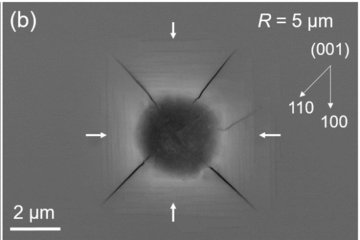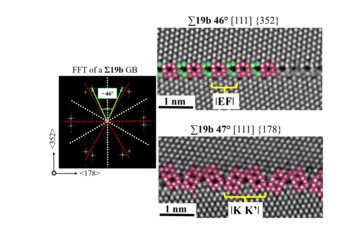All genres
201.
Journal Article
Strain-induced phase transformation of a thin Co film on flexible substrates. Acta Materialia 121, pp. 227 - 233 (2016)
202.
Journal Article
Superlattice effect for enhanced fracture toughness of hard coatings. Scripta Materialia 124, pp. 67 - 70 (2016)
203.
Journal Article
Fracture toughness of intermetallic Cu6Sn5 in lead-free solder microelectronics. Scripta Materialia 123, pp. 38 - 41 (2016)
204.
Journal Article
Deformation-Induced Martensite: A New Paradigm for Exceptional Steels. Advanced Materials 28 (35), pp. 7753 - 7757 (2016)
205.
Journal Article
Coccospheres confer mechanical protection: New evidence for an old hypothesis. Acta Biomaterialia 42, pp. 258 - 264 (2016)
206.
Journal Article
Importance and Challenges of Electrochemical in Situ Liquid Cell Electron Microscopy for Energy Conversion Research. Accounts of Chemical Research 49 (9), pp. 2015 - 2022 (2016)
207.
Journal Article
Size and orientation dependent mechanical behavior of body-centered tetragonal Sn at 0.6 of the melting temperature. Acta Materialia 115, pp. 76 - 82 (2016)
208.
Journal Article
Are Mo2BC nanocrystalline coatings damage resistant? Insights from comparative tension experiments. Surface and Coatings Technology 289, pp. 213 - 218 (2016)
209.
Journal Article
Heat-Induced Phase Transformation of Three-Dimensional Nb3O7(OH) Superstructures: Effect of Atmosphere and Electron Beam. Crystal Growth & Design 16 (8), pp. 4309 - 4317 (2016)
210.
Journal Article
Microscale Fracture Behavior of Single Crystal Silicon Beams at Elevated Temperatures. Nano Letters 16 (12), pp. 7597 - 7603 (2016)
211.
Journal Article
Electronic hybridisation implications for the damage-tolerance of thin film metallic glasses. Scientific Reports 6, 36556 , pp. 1 - 12 (2016)
212.
Journal Article
Transition from shear to stress-assisted diffusion of copper–chromium nanolayered thin films at elevated temperatures. Acta Materialia 100, pp. 73 - 80 (2015)
213.
Journal Article
Nanotribology in austenite: Plastic plowing and crack formation. WEAR 338–339, pp. 436 - 440 (2015)
214.
Journal Article
Nanotribology in austenite: Normal force dependence. WEAR 338–339, pp. 430 - 435 (2015)
215.
Journal Article
Influence of inclined twin boundaries on the deformation behavior of Cu micropillars. Materials Science and Engineering A: Structural Materials Properties Microstructure and Processing 642, pp. 65 - 70 (2015)
216.
Journal Article
In situ TEM microcompression of single and bicrystalline samples: insights and limitations. JOM-Journal of the Minerals Metals & Materials Society 67 (8), pp. 1704 - 1712 (2015)
217.
Journal Article
Comparing small scale plasticity of copper-chromium nanolayered and alloyed thin films at elevated temperatures. Acta Materialia 93, 12073, pp. 175 - 186 (2015)
218.
Journal Article
Adhesion measurement of a buried Cr interlayer on polyimide. Philosophical Magazine 95 (16-18), pp. 1982 - 1991 (2015)
219.
Journal Article
The peculiarity of the metal-ceramic interface. Scientific Reports 5, 11460 (2015)
220.
Journal Article
Micro-tension study of miniaturized Cu lines at variable temperatures. Acta Materialia 92, pp. 243 - 254 (2015)











